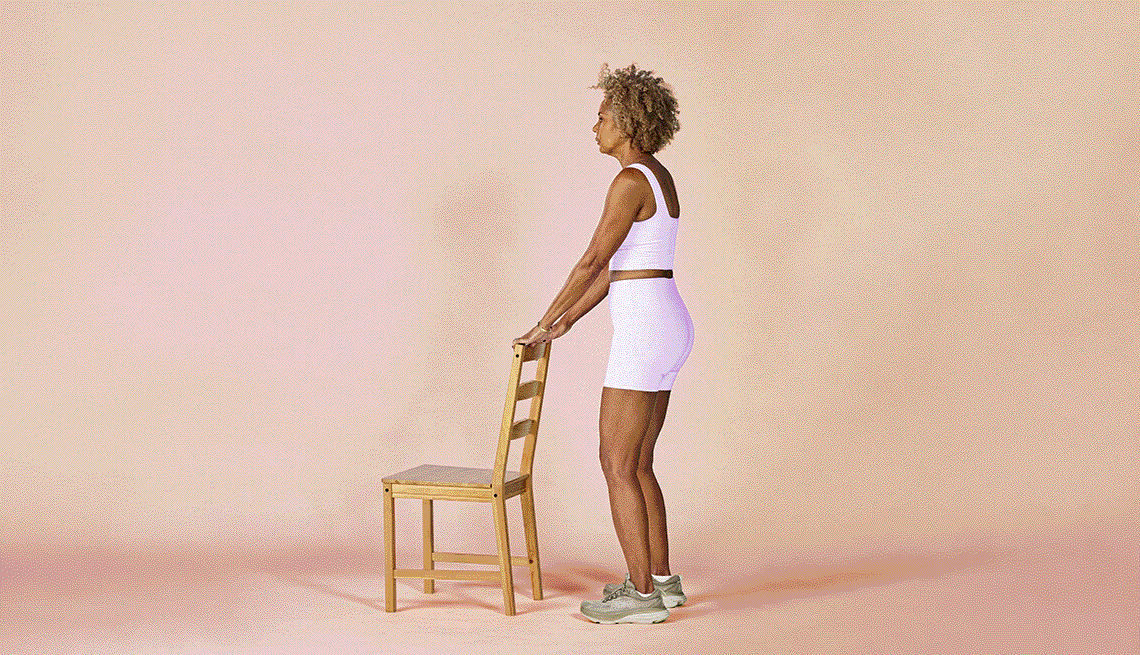AARP Hearing Center


As we get older, knee discomfort and stiffness are common issues, caused by arthritis and wear and tear after years of use. One in four adults over age 55 has knee pain, according to the journal Osteoarthritis and Cartilage. The good news is that exercise can help strengthen and stabilize your knees, reducing discomfort and improving mobility, says Anthony Beutler, M.D., medical director for sports medicine at Intermountain Healthcare.
Beutler says by far the best exercise for your knee is cycling, either on a stationary or a regular bike. Biking strengthens all the muscles around your knee joint without putting too much force on it, he says, which is especially important if you already have pain.
A 2024 study published in the journal Medicine & Science in Sports & Exercise found that people who cycled at any point in their life were 17 percent less likely than non-cyclists to develop knee pain and 21 percent less likely to develop arthritis with pain in the knee joint.
#1 Exercise Series
Do these to stay strong as you age
“Biking is the # 1 most awesome exercise for any knee: a replaced knee, a native knee, a knee with osteoarthritis or a knee that's otherwise pretty good,” Beutler says. “It moves your knee. Knees like to move. Motion is lotion.”
No bike? Try a set of squats or mini-squats
If you don’t have access to a bike, Beutler and other experts recommend a squat or a mini-squat to strengthen the quadriceps at the front of your thigh — the primary muscle supporting your knee.
A deep squat can put pressure on your knee joint, so if you have knee pain, just go down as far as you can comfortably, Beutler says. You will still get the benefits if you do a mini-squat, with less strain on your knee.
Squats also target your calves, hamstrings and glutes, as well as muscles in your lower back and core. As a bonus, many fitness experts believe squats are the best exercise to do as you get older.
How to perform a squat or mini-squat in three steps
Here is a step-by-step guide on how to do squats or mini-squats. Remember to talk to your doctor before beginning any new exercise routine. And if you feel pain with movement, stop and consult with a health care provider or physical therapist.
1. Get in position
Start with your feet shoulder-width apart or a little wider, your toes pointed slightly out. If you’re new to squats, choose a spot where you can hold onto a steady surface, or squat against a wall or onto a bar stool.
2. Lower into a squat
Keeping your back straight and chest up, bend your knees and push your hips back like you are sitting down. Focus on shifting your weight into your heels as you do the movement, Beutler says. Make sure your knees don’t cave in or extend forward over your toes.
You don’t need to do a deep bend to get the benefits, Beutler says; just lower yourself as far as you can comfortably go. A mini-squat is great if that's what you can do.
3. Repeat
Aim for two sets of eight to ten, at a tempo of two seconds down, two seconds up. If two sets are easy, make it more challenging by holding weights or using resistance bands tucked under your feet.

































































You Might Also Like
#1 Exercise for Your Butt and Glutes
If you have time for only one exercise for your tush, here is an easy and effective way to strengthen these muscles
Yoga Poses to Fight Osteoporosis
Build bone mass with these five easy moves
#1 Exercise for Back Pain
Try this for a is a safe, effective way to relieve pain in your lower back